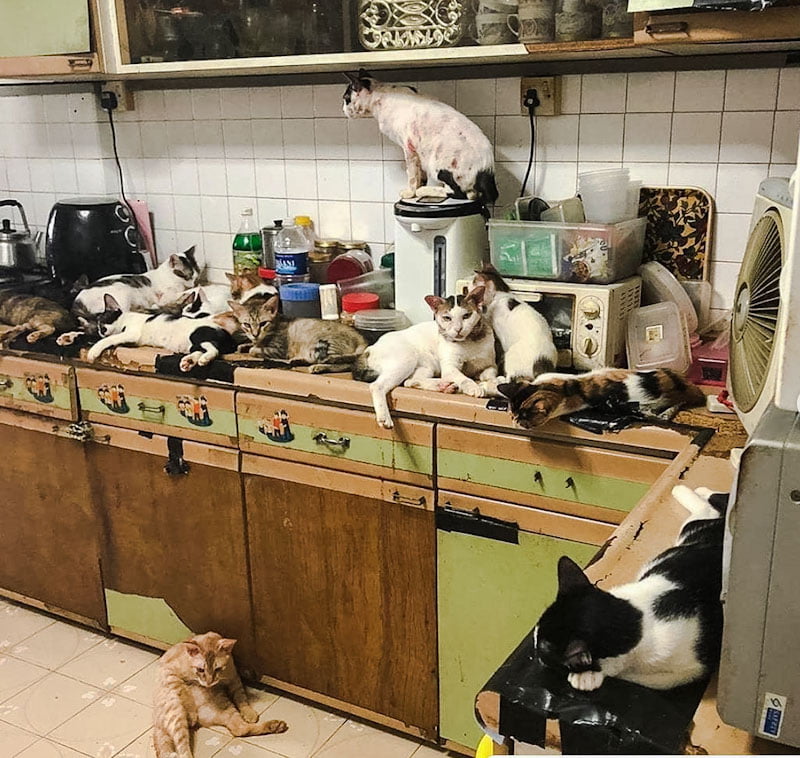Well, the answer is obvious so I'll keep it short. Cats instinctively look for a suitable substrate on which to urinate and defecate. There is nothing in the home which anywhere near meets their criteria for an effective substrate except the litter in the cat litter tray which is somewhat like earth or sand from outside the home except better as it is made to be more absorbent. So, they make a beeline for it.
Substrate: an underlying substance or layer. |
| Cats and kittens use them instinctively as the substrate is ideal. Image: MikeB |
They can poop and pee on it and if they feel the need (not all domestic cats do) they can bury it. Most often they bury poop. My male cat did not. Perhaps because he felt confident enough not to hide his scent. Hiding poop is a sort of submissive act to make themselves invisible to more dominant males.
Of course, after they've used the new litter tray for the first time it smells of their poop and pee so they recognise the litter tray as their toilet. They already know it is a nice substrate. Becoming their toilet reinforces its use.
Cat litter trays should not be over cleaned and disinfected as it kills off the cat's scent which they like. It is just possible that a cat might stop using their litter tray if it is bleached and scrubbed to well.
It should be kept clean but not overclean.
Indoor/outdoor cats don't need a litter tray indoors as they'll find a suitable area outdoors in the same way: a nice substrate. Although if you put down a litter tray, they'll probably use it as it might be more comfortable for them.
Jackson Galaxy says that in general cats prefer uncovered litter trays as covered ones might be a bit of a barrier. I disagree. Covered litter boxes are more private and cats like that. And cats feel more protected in covered litter trays during what is a vulnerable action.
Declawed cats are seven times more likely to pee in inappropriate places.
Declawed cats can find litter substrates of any kind uncomfortable to use because of their sore feet. They may pee and poop outside the box. Declawed cats are about 7 times more likely to do this than non-declawed cats. A warning to those who are considering this obnoxious operation (mutilation).
Another warning: don't use litter substrates which are too dusty as kittens will inhale a ton of dust when digging a hole to poop into. The worse cat litter and the most dangerous as far as I am concerned is Tidy Cats Lightweight Cat Litter. Avoid the stuff please. It is no good. Some cats have died using it.
The manufacturers sold out health and safety to make Tidy Cats more convenient for women to use as it is easier to carry. The directors thought it was a good idea as cat litter can be heavy but they overlooked the health implications.
Environmentally Friendly Cat Litter
I asked Bing's AI for advice about the best cat litter substrate. The response it not great:
The best cat litter substrates are made up of natural materials that are safe for your cat and the environment. Here are some of the best cat litter substrates and why:
- Clay: The cheapest and most popular material for cat litter, clay is good at absorbing liquids but it gets dusty and smelly (which your cat will hate), so it needs regular cleaning.
- Wood shavings or sawdust: Wood shavings or sawdust are biodegradable and eco-friendly. They are also good at absorbing liquids and controlling odors.
- Sand: Sand is a natural material that is good at absorbing liquids. It is also easy to clean and does not produce dust2.
- Whole wheat: Whole wheat is a natural material that is biodegradable and eco-friendly. It is also good at absorbing liquids and controlling odors.
- Potting soil: Potting soil is a natural material that is biodegradable and eco-friendly. It is also good at absorbing liquids and controlling odors.
- Chicken feed: Chicken feed is a natural material that is biodegradable and eco-friendly. It is also good at absorbing liquids and controlling odors.
- Walnut litter: Walnut litter is a natural material that is biodegradable and eco-friendly. It is also good at absorbing liquids and controlling odors.
I hope that helps!



